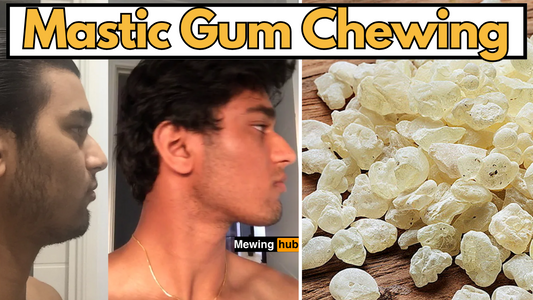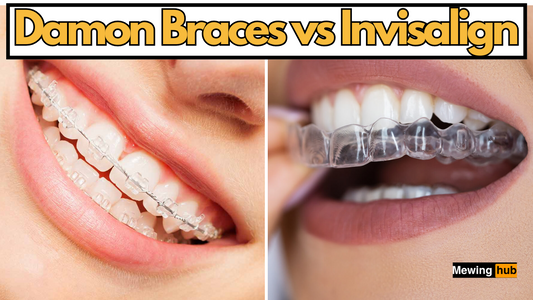How Long Should You Mew in a Day? Maximizing Your Mewing Results

Share

Let's delve into a brief history lesson
Ancient skulls exhibit well-developed lower facial areas, perfectly aligned teeth, and prominent jaws. These features were primarily shaped by the lifestyle of our ancestors. However, thousands of years later, we face challenges such as teeth misalignment, underdeveloped jaws, and malocclusion.
However, thousands of years later, we face challenges such as teeth misalignment, underdeveloped jaws, and malocclusion.
Common Mistakes to Avoid:
To effectively enhance your facial structure, it's essential to practice correct mewing for a full 24 hours.
Balancing Forces: Soft Mewing vs. Hard Mewing
The amount of force applied distinguishes regular mewing from hard mewing. Hard mewing involves exerting maximum force to push your tongue against the roof of your mouth. The goal of hard mewing is to expedite results. Furthermore, hard mewing reinforces neural pathways, enabling longer periods of correct tongue posture. Soft mewing, on the other hand, involves mewing without applying excessive force.
Hard mewing is popular among adults who begin mewing later in life as their facial structure becomes less malleable than during childhood. Adult bones are more rigid and require greater force to induce changes.
Wolff's Law:
 The Dynamic Nature of Bones Our bones are dynamic structures that undergo constant remodeling. This process involves specialized cells: osteoclasts remove and break down old bone, while osteoblasts encourage bone growth by depositing new tissues.
The Dynamic Nature of Bones Our bones are dynamic structures that undergo constant remodeling. This process involves specialized cells: osteoclasts remove and break down old bone, while osteoblasts encourage bone growth by depositing new tissues.
Julius Wolff, a German surgeon, proposed that bone structure is significantly influenced by the stress placed upon it.
Solidifying Your Mewing Habit
Individuals who have been practicing mewing for years will attest that it requires practice and commitment before reaching a point where mewing becomes second nature.
One common reason people give up on mewing is the lack of immediate results.
It's important to understand that the journey towards mewing results begins with conditioning your body to adopt the practice. Like any habit, mewing requires a consistent stimulus.

Tips to help you establish mewing as a regular part of your routine:
-
Gain Motivation from Others: If you find yourself hesitant to fully commit to mewing, seek motivation from online forums such as the MewingHub Forum. By looking at before-and-after photos of others and hearing their success stories, you can find inspiration to persevere.
-
Set Reminders: Use alarms or scheduling apps to remind yourself of designated mewing times throughout the day. Ensure that the alarms don't disrupt others around you. Setting reminders at regular intervals, such as every half hour or 15 minutes, can be helpful in reinforcing the habit.
-
Utilize Psychological Triggers: Train your mind to associate specific items, activities, or areas of your home with mewing. For example, you can associate mewing with seeing a particular object or performing household chores. You can even associate mewing with phone vibrations or receiving messages. Find a trigger that works best for you to remind yourself that it's time to practice mewing.
Conclusion
Mewing will eventually become a seamless part of your daily routine, and it will become easier with time. Remember that proper mewing should be practiced 24/7.
If you initially find it challenging, start small by engaging in mewing for a couple of hours each day. You'll likely notice your body naturally encouraging you to practice mewing more.
EXTRA HELP TO MEW ALL DAY
Additionally, for those looking to enhance their mewing journey, consider exploring products that can complement your efforts:
Jawlize:
These trainers are designed to help sculpt and define your jawline. Chewing is essential for proper facial development and mewing results.
Get your affordable Jawlize trainers now !
The Mewing-ring:
An innovative tool that assists in maintaining proper tongue posture. It provides a gentle reminder when your tongue posture slips.
Go check it out; Mewing-Ring
If you have any further questions or seek additional guidance, don't hesitate to reach out to the MewingHub forum!
Join the thriving mewing community and take advantage of the free basic mewing guide available when you sign up.
Visit the MewingHub forum !










